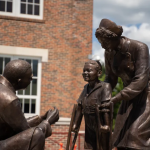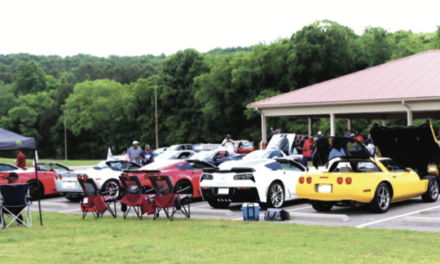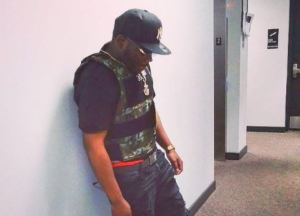
By Alexis Taylor
Special to the AFRO
A two-year investigation has yielded a 515-page report on the Baltimore Police Department’s (BPD) Gun Trace Task Force (GTTF) and the spoiled culture that have allowed corrupt officers to thrive.
The independent investigation by Steptoe & Johnson LLP, an international law firm, was set in motion by BPD Commissioner Michael Harrison the same year he took office in 2019.
Investigators found that as far back as 1999 and earlier, BPD has operated an ineffective system, giving way to criminal acts like those carried out by GTTF members and their superiors.
The “overemphasis” on reporting positive crime statistics, a poor system of supervision and accountability, and “an ‘us vs. them’ mentality” among officers serving City residents were all listed as key reasons the BPD officers were allowed to reign free for so long.
“BPD has historically fallen short in creating and maintaining a culture of lawful and ethical behavior, from recruitment through the handling of allegations of misconduct,” reads the report. “A police officer’s duty to engage in lawful and ethical behavior should be stressed from the moment recruits apply to the Department until the day they depart.”
Investigators said the BPD training academy is where many problems of the past started. BPD candidates that were supposed to learn how to effectively serve instead were allegedly pushed along “despite red flags” to fulfill staffing shortfalls.
There were cases of police recruits receiving test answers. Others failed physical and intellectual tests, but were still accepted into the BPD. Classes that began with 50 recruits, ended with 50 recruits- even when there was evidence that some should have been investigated or dismissed from the cohort altogether.
Once on the street, the report alleges that arrest data and the amount of illegal narcotics and guns seized during busts were all “enshrined as the most important yardstick for measuring success and failure, for the Department as a whole, for its police commissioners, and for individual squads and members.”
The team of investors, led by Steptoe & Johnson LLP senior council Michael R. Bromwich, found that zero-tolerance guidelines involved in the “quality-of-life approach to policing” begat decades of policy that negatively impacted Baltimore residents.
Officers who began serving in 1999 and 2000 entered a force that was rife with corruption.
In 2000 a New York consulting firm surveyed BPD officers and found that one in four BPD members at the time believed at least 25% of their colleagues were robbing drug dealers for money or drugs.
These were not victimless crimes.
“If officers engaged in a foot pursuit, suspects would frequently be beaten once they were caught, and in some cases deliberately sent to the hospital,” found investigators. “BPD members conducted stops and made arrests without a sufficient factual or legal basis.”
“These practices have long been embedded in BPD’s culture and help to explain why it provided a nourishing environment for corruption and misconduct.”
Indeed it was a very nourishing environment.
By the time GTTF members were indicted in March 2017, the officers had already done years of damage to Baltimore communities- dating back to even before they joined the unit. The Gun Trace Task Force, originally created in 2007 to analyze gun crime and stop the flow of firearms in Baltimore City, had become a criminal enterprise in and of itself.
Within ten years of its inception, members of the Gun Trace Task Force (GTTF) were being indicted for a laundry list of crimes to include “racketeering, robbery, extortion, and overtime fraud.”
Those who weren’t actually planting drugs on residents were lying to cover for the officers terrorizing the streets of Baltimore.
Eighty-six year old Elbert Davis lost his life in 2010 when his car collided with two men desperately trying to escape members of the BPD. They were sent to jail. And the city forked over money when the men were released.
Roughly 800 cases were affected when convictions were vacated or charges were dismissed due to the reckless behavior of the officers.
On the first day of March in 2017 Wayne Jenkins, Momodu Gondo, Evodio Hendrix, Daniel Hersl, Jemell Rayam, Marcus Taylor, and Maurice Ward were all taken into police custody, charged for crimes committed with the BPD badge.
Hendrix, Rayam, and Ward decided to cooperate with authorities after pleading guilty to racketeering conspiracy charges. Gondo pled guilty to the same crime, and also admitted his role in a narcotics conspiracy from a separate indictment.
The four officers then began helping officials build a case that would rock the trust of city residents, already disillusioned by decades of mistreatment and the death of Freddie Gray.
The cooperation led to the GTTF’s former sergeant Thomas Allers being charged, along with five other former BPD officials- Keith Gladstone, Robert Hankard, Ivo Louvado, Victor Rivera, and Carmine Vignola.
“As of December 2021, as a result of the federal investigation, 10 former BPD members have pled guilty, two -Hersl and Taylor- were convicted at trial, and one non-GTTF member, Hankard, is awaiting trial,” noted the report. “These former BPD officers constituted not a single criminal gang, but instead a shifting constellation of corrupt officers who discovered each other during the course of their careers and committed their crimes individually, in small groups, and then in larger groups.”
The report found that the defendants often engaged in criminal misconduct “that should have ended their BPD careers, but did not do so because of profound weaknesses in the system for investigating, charging, and adjudicating allegations of misconduct.”
Each time superiors like Dean Palmere and Sean Miller- of the BPD’s Use of Force Review Board- turned a blind eye to Jenkins and his crew, the GTTF members grew bolder in their misconduct.
“Jenkins was placed on a pedestal by command staff members, including Miller and Palmere. He was given special privileges: he was assigned his own vehicle; he was allowed to equip the vehicle with a push bumper, the main purpose of which was to ram other vehicles; and he was held out as a model to other supervisors based on his productivity despite his reputation for flouting BPD’s policies,” reads the report.
“He was a management nightmare, but his productivity was his license to continue operating with no meaningful supervision.”
Investigators used 160 witness interviews, the original 45-page indictment of the officers and hundreds of thousands of related documents to form the bulk of the report. Testimony from every mayor to hold the office since O’Malley was also used, along with interviews from former commissioners.
Current BPD leader, Commissioner Michael Harrison, took over in March of 2019, shortly before the last member of the task force was sentenced for his actions.
“While the report provides an unflinching look at BPD’s own historical shortcomings, it is necessary for the information to be brought to light, so that we do not repeat the mistakes of the past,” said Harrison.
The report also outlined 25 recommendations for the BPD, many of which Harrison said were already being addressed in some form or fashion.
“The BPD intends to use the report as a tool for internal evaluation and departmental improvement. As we do so, BPD pledges its continued transparency and welcomes opportunities for collaboration with the community it serves.”
To read the full report visit https://www.steptoe.com/images/content/2/1/v2/219380/GTTF-Report.pdf
To read Commissioner Harrison’s response to the report and it’s recommendations please visit https://www.baltimorepolice.org/gttf-report-response
Help us Continue to tell OUR Story and join the AFRO family as a member – subscribers are now members! Join here!
The post Report: Culture of misconduct within BPD emboldened crooked cops, paved way for GTTF unit corruption appeared first on AFRO American Newspapers .











